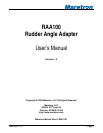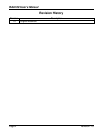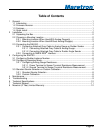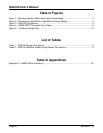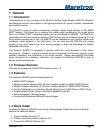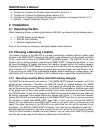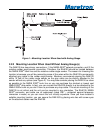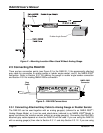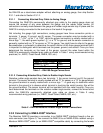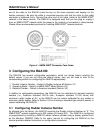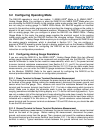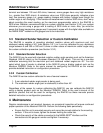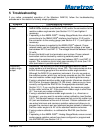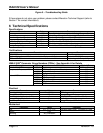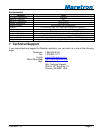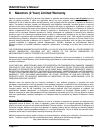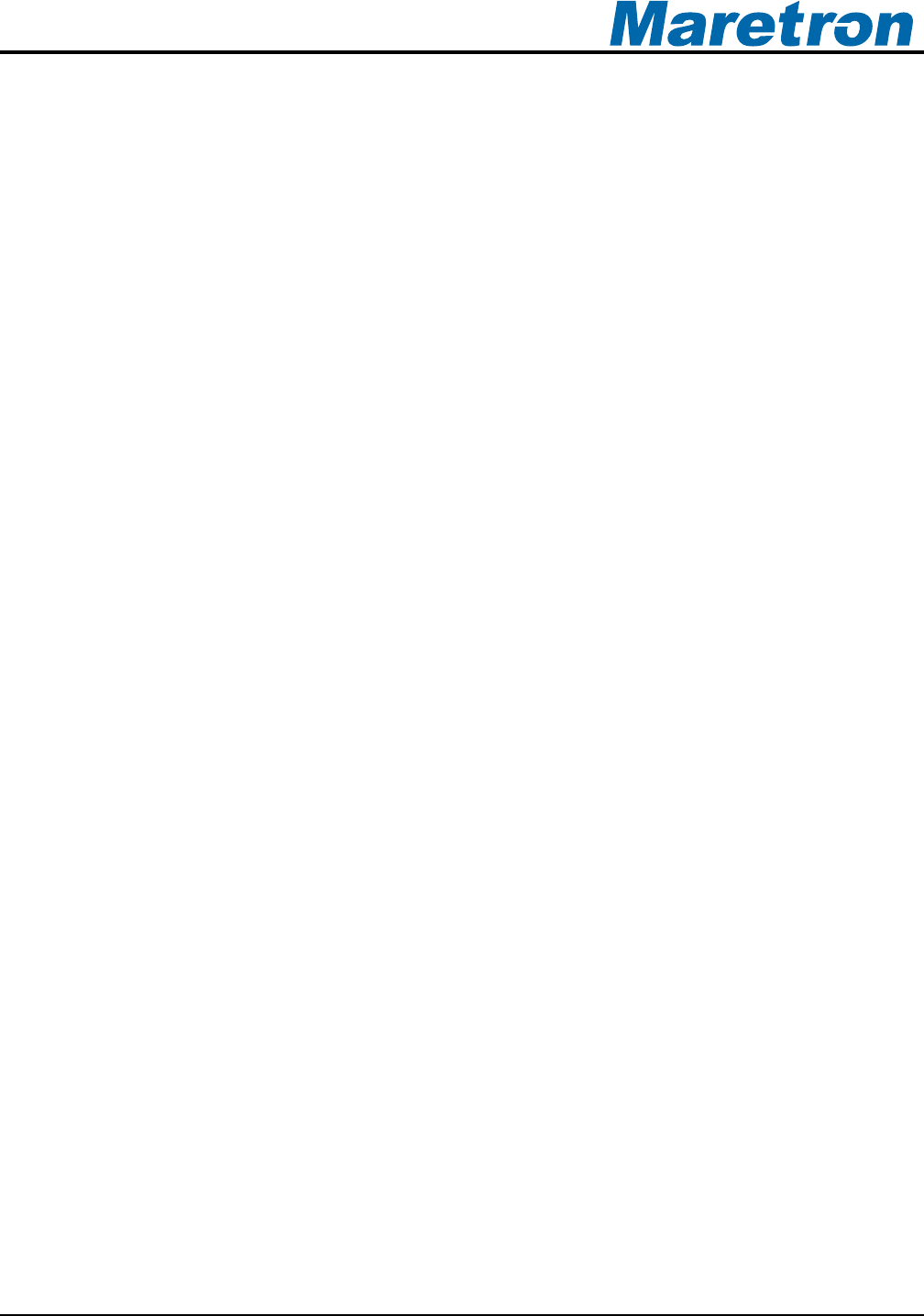
®®
Revision 1.0 Page 1
1 General
1.1 Introduction
Congratulations on your purchase of the Maretron Rudder Angle Adapter (RAA100). Maretron
has designed and built your adapter to the highest standards for years of reliable, dependable,
and accurate service.
The RAA100 is used to adapt commercially available rudder angle senders to the NMEA
2000
®
network. This allows you to observe the rudder angle anywhere on the vessel where
there is an NMEA 2000
®
compatible display such as the Maretron DSM200. The RAA100 is
compatible with both the American standard (240-33 ohm) and the European standard (10-180
ohm) resistive senders and in fact, the RAA100 can be calibrated for any resistive sender with
resistance values between 0 and 300 ohms. You can also use the RAA100 with analog
gauges so you don’t have to get rid of existing gauges to enjoy the advantages of digitally
networked information.
The Maretron RAA100 is designed to operate within the harsh demands of the marine
environment. However, no piece of marine electronic equipment can function properly unless
installed, calibrated, and maintained in the correct manner. Please read carefully and follow
these instructions for installation, calibration, and usage of the Maretron RAA100 in order to
ensure optimal performance.
1.2 Firmware Revision
This manual corresponds to RAA100 firmware revision 1.2
1.3 Features
The Maretron RAA100 has the following features.
• NMEA 2000
®
Interface
• Adapts American standard (240-30 ohm) resistive senders to NMEA 2000
®
Network
• Adapts European standard (10-180 ohm) resistive senders to NMEA 2000
®
Network
• Can be Calibrated for any Resistive Sender Ranging from 0-300 Ohms or 300-0 Ohms
• Programmable Rudder Instance Number(s) between 0 and 251
• Works Alongside of Analog Gauges
• Can be Used Standalone Without Analog Gauges
1.4 Quick Install
Installing the Maretron RAA100 involves the following steps. Please refer to the individual
sections for additional details.
1. Unpack the Box (Section 2.1)
2. Choose a Mounting Location (Section 2.2)
3. Connect the RAA100 (Section 2.3)



